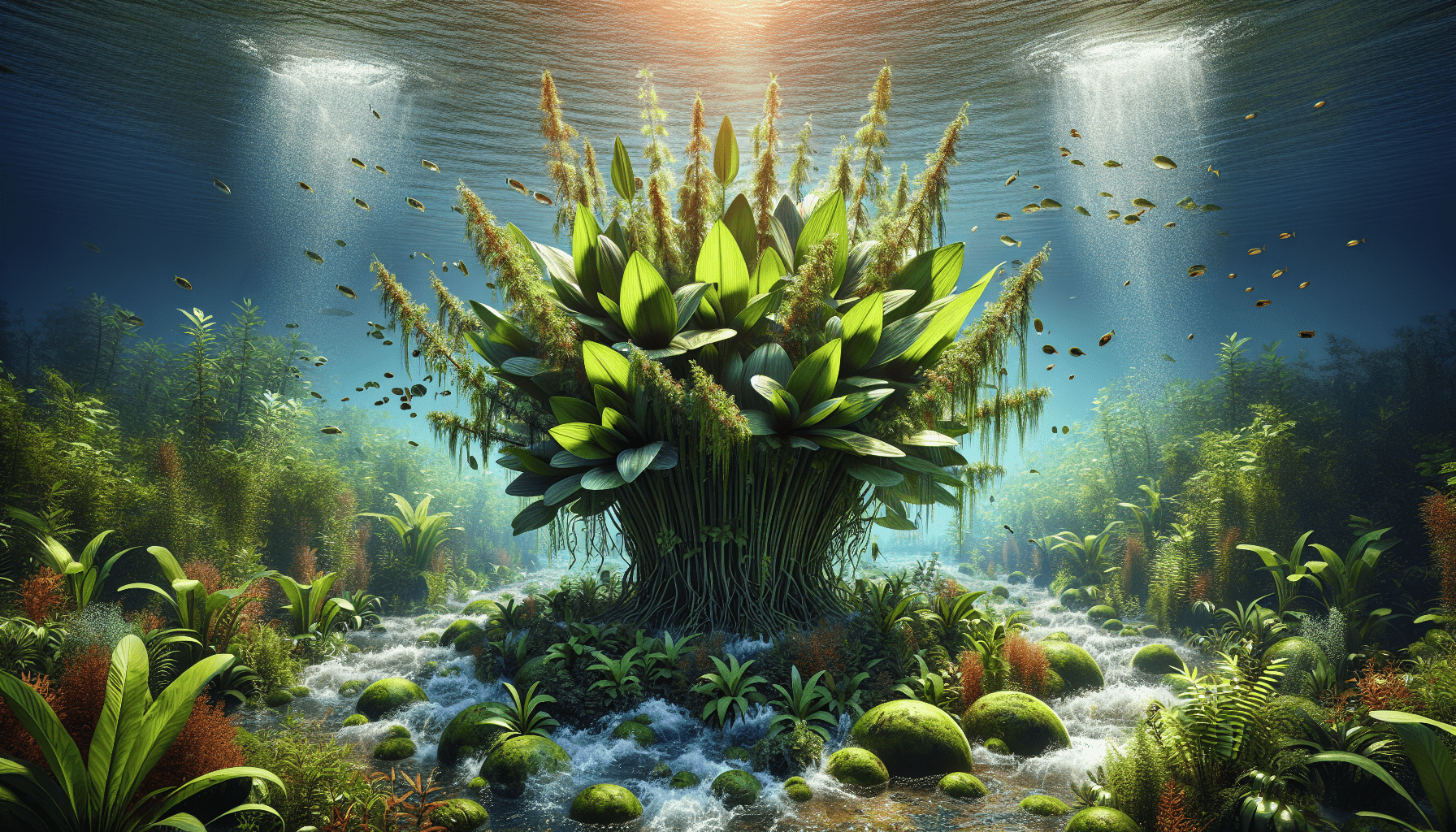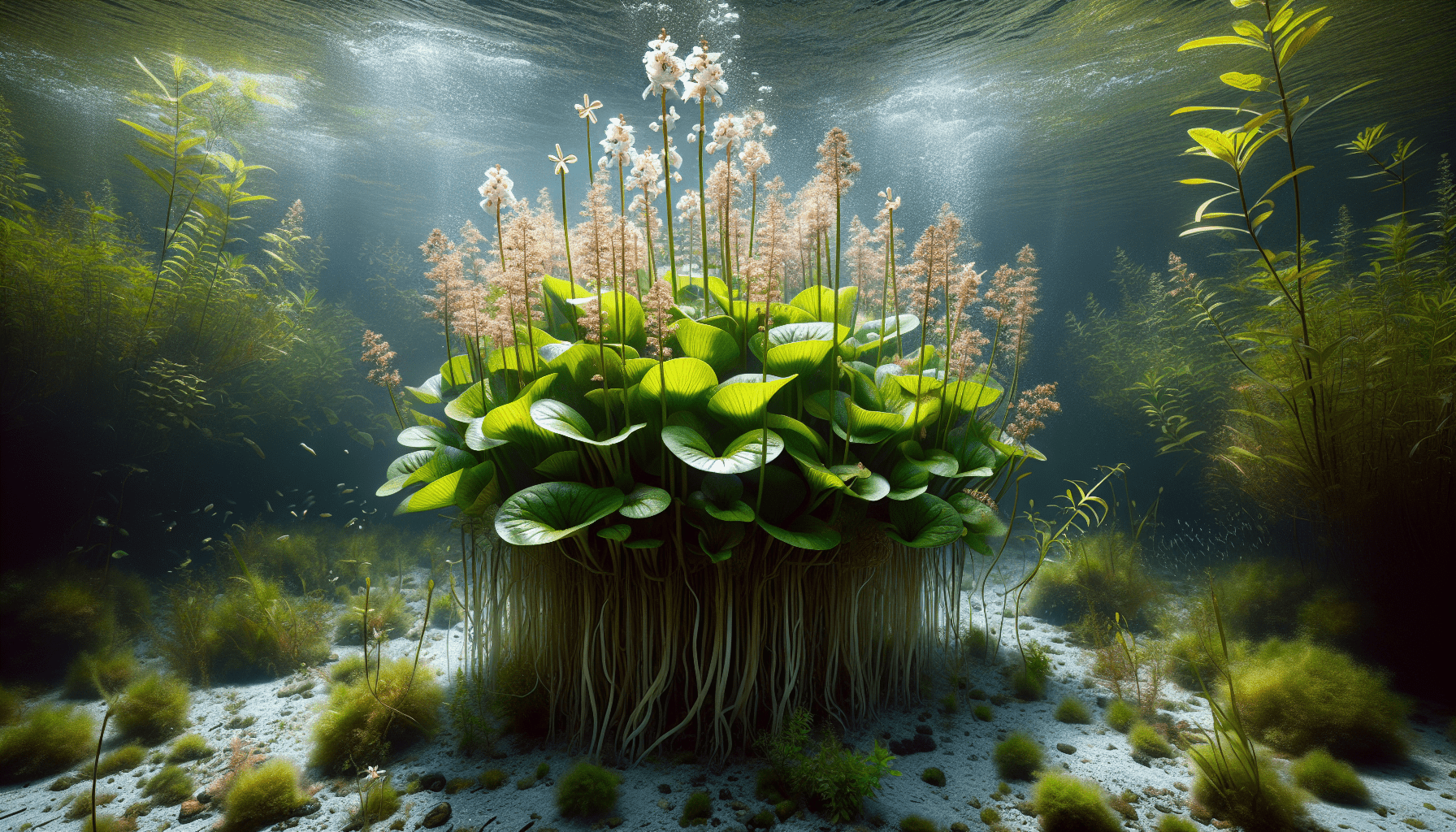As you explore the topic of “What Is The Aquatic Weed Potamogeton Illinoensis,” prepare yourself for a profound understanding of this unique aquatic plant species. The expectation is that you will gain an enriched knowledge of its distribution, life cycle, and ecological significance. Potamogeton Illinoensis, most commonly known as the Illinois pondweed, is widely distributed in North America. It inhabits a range of water bodies, including ponds, streams, and even reservoirs, conveying its ability to adapt and survive in various aquatic environments. It’s more than just an aquatic weed, as it plays various roles within its ecosystem. By the end of this educational journey, you will have developed a comprehensive understanding of this profound aquatic species.

Overview of Potamogeton Illinoensis
Definition and scientific classification of Potamogeton Illinoensis
Potamogeton Illinoensis, commonly known as Illinois Pondweed, belongs to the Potamogetonaceae family. This species is one of approximately a hundred within the Potamogeton genus. As an aquatic plant, it thrives in the slow-moving waters of rivers, lakes, and ponds. The species was first classified by Morong in 1881.
Common names and popular synonyms
Although its scientific name is Potamogeton Illinoensis, it is more popularly known as Illinois Pondweed. This stems from the discovery of the plant in Illinois. Other common names include swollen pondweed, and sometimes broad-leafed pondweed, mainly due to the appearance of its leaves.
Geographic distribution and natural habitat
Potamogeton Illinoensis is widely distributed throughout North America. It thrives particularly in the Midwestern and Southeastern regions of the U.S.A. Though predominantly a temperate species, it can also be found in subtropical climates. As an aquatic plant, its natural habitat comprises water bodies such as ponds, lakes, and streams, with preference for slow-moving or stagnant water.
Description of Potamogeton Illinoensis
Physical characteristics and growth habit
Illinois Pondweed is characterized by its broad, oblong leaves that generally measure between 10 to 20 centimeters in length. These leaves are submerged underwater and float around flexibly, responding to the motions of the water. The plant exhibits a spreading growth habit, expanding across the water surface quickly.
Life cycle and reproductive system
The life cycle of Potamogeton Illinoensis involves seasonal changes. It blooms from late spring through to early autumn. It reproduces both by vegetative means and through seed dispersal. The plant’s seeds are deposited on the waterbed and, once germinated, give rise to new plants.
Varieties and cultivars
Currently, no specific varieties or cultivars of Potamogeton Illinoensis are recorded in botanical literature. However, its broad-leaved form results in its confusion with other similar species.
Ecological Impact of Potamogeton Illinoensis
Role in the aquatic ecosystem
Illinois Pondweed plays a crucial role in the overall health and balance of many aquatic ecosystems. It provides oxygenation to the water, aiding in the survival and thriving of various aquatic organisms. The plant also serves as a food source and provides habitat for small fish and waterfowl.
Impact on biodiversity
The role of Potamogeton Illinoensis in aquatic ecosystems often positively impacts local biodiversity. By providing shelter and food for numerous organisms, it supports a variety of species and facilitates balanced populations within its habitats.
Potential risks and challenges
Despite its ecological benefits, Illinois Pondweed can present challenges. As a robust grower, it can crowd other plant species, thereby reducing biodiversity. Additionally, dense infestations can negatively affect the recreational uses of water bodies.

Economic Importance of Potamogeton Illinoensis
Use in aquaculture and fisheries
Illinois Pondweed finds application in the aquaculture industry. As a source of food and habitat for fish, it aids in the sustainable growth of fish populations and enhances the productivity of commercial and recreational fisheries.
Other commercial uses
At present, there are no specific commercial uses for Potamogeton Illinoensis beyond its applicability in aquaculture. Nonetheless, its role in maintaining water quality indirectly supports other water-dependent industries.
Implications for tourism and recreation
In water bodies used for recreation, unchecked growth of Illinois Pondweed can inconvenience swimmers, boaters, and anglers. Effective management of its population is necessary to ensure a balance between ecological preservation and human enjoyment of these environments.
Cultural Significance of Potamogeton Illinoensis
Historical and ethnobotanical uses
Historically, Potamogeton species were used by indigenous communities for medicinal, culinary, and technological purposes, although specific uses for P. Illinoensis are not documented.
Symbolic and religious significance
While Potamogeton Illinoensis is not associated with any particular religious or symbolic traditions, it stands as a symbol of healthy and biodiverse aquatic habitats.
Present-day cultural references
There is a dearth of modern cultural references to Potamogeton Illinoensis, underscoring the importance of increasing awareness about this plant species and its ecological role.
Conservation Status and Threats to Potamogeton Illinoensis
Current conservation status
The conservation status of Illinois Pondweed is not a cause for particular concern. It is widespread and abundant in many areas, although local declines may occur due to habitat alteration and pollution.
Major threats to survival
The major threats to this plant include water pollution, physical disruption of its habitat, invasive species, and excessive harvesting. These factors can significantly affect the survival and growth of P. Illinoensis populations.
Efforts towards preservation and protection
Efforts toward preserving and protecting P. Illinoensis mostly involve managing pollution sources and preserving its natural habitats. Its value to aquatic ecosystems underscores the need for sustainable management strategies.
Management and Control of Potamogeton Illinoensis
Methods for control and eradication
Manual removal, mechanical removal, and the use of herbicides are common methods for controlling P. Illinoensis. However, care should be taken not to completely eliminate this beneficial plant species or disrupt the local ecosystem in the process.
Challenges in management
One of the main challenges in managing its populations is the delicate balance required between controlling its spread and preserving its positive impacts on biodiversity and water quality.
Success stories in controlling Potamogeton Illinoensis
While examples of successful control of P. Illinoensis are not frequently recorded, its responsible management has been attained in some water bodies. These typically involve integrated approaches which include manual removal, mechanical control, and limited use of herbicides.
Research Developments on Potamogeton Illinoensis
Latest studies on ecology and biology
Research on Potamogeton Illinoensis has mainly focused on its ecological roles and the factors that affect its growth and distribution. These studies are key to understanding its biological characteristics and its influence in aquatic ecosystems.
Groundbreaking discoveries
In the research arena related to P. Illinoensis, breakthroughs are ongoing. One example is understanding the plant’s capability to adapt to various levels of water pollution, presenting potential applications in bioindicator studies.
Future research directions
Future research should continue exploring this plant’s roles in ecosystems, its adaptability in varying habitats, and effective methodologies for its sustainable management.
Potamogeton Illinoensis in the Garden and Aquarium
Growing conditions and care
In home ponds or aquariums, Potamogeton Illinoensis requires slow-moving water and ample sunlight. Similarly to its natural habitat, it does well in nutrient-rich conditions.
Benefits and drawbacks in cultivation
The culture of P. Illinoensis in gardens or aquariums can add beauty and biodiversity. However, its prolific growth must be managed to avoid competition with other plant species.
Recommendations for gardeners and aquarium enthusiasts
The cultivation of P. Illinoensis is recommended with some caution. Regular monitoring and pruning will ensure that it adds aesthetic and ecological value without becoming invasive.
Summary of Key Facts About Potamogeton Illinoensis
Key species characteristics and features
Potamogeton Illinoensis, the Illinois Pondweed, is an aquatic plant native to North America, with broad, oblong leaves and a prolific growth habit. It reproduces through both vegetative means and seeds.
Summary of ecological and economic importance
Illinois Pondweed plays a crucial role in aquatic ecosystems, providing food, cover for fish and other aquatic organisms, and oxygenating the water. It is beneficial in aquaculture and also contributes indirectly to other industries through its role in maintaining water quality.
Crucial conservation, management, and research updates
Despite its benefits, the plant is a challenge to manage due to its robust growth. The main threats to its populations are pollution, habitat disruption, and invasive species. Research into this species is ongoing, and more understanding about its biology and ecology will support the development of effective management strategies. In home gardens or aquariums, it requires monitoring to prevent aggressive spread.